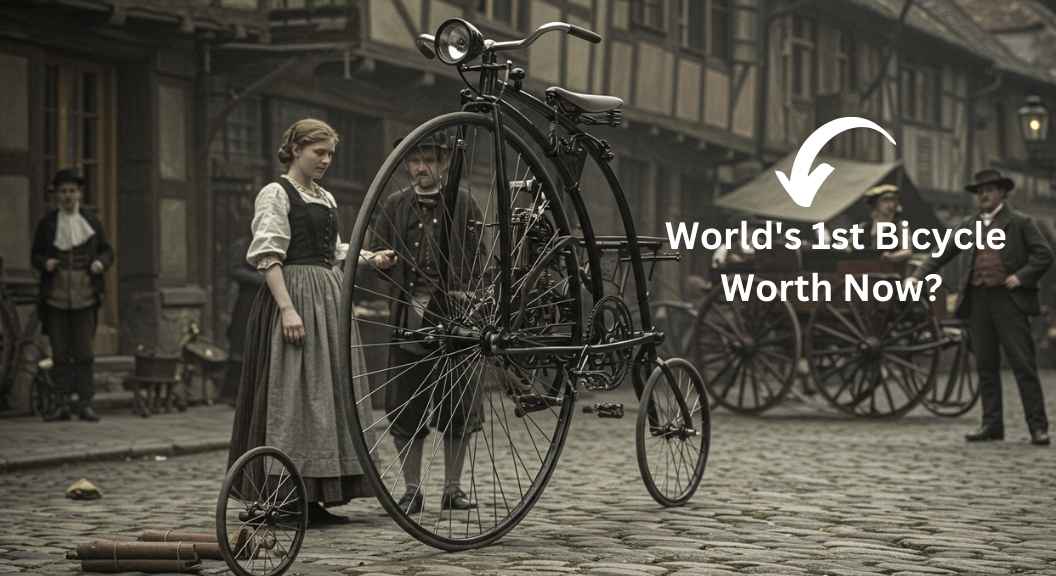World First Bicycle Who invented, Price and History

The first bicycle was invented in 1817 by a German inventor named Karl Drais. His invention called the “Draisine” or “Laufmaschine” (running machine), was a two-wheeled vehicle made of wood with no pedals. Instead, riders had to push themselves forward using their feet on the ground.

Key Features of the First Bicycle (Draisine)
- Material: Made entirely of wood
- Wheels: Two wheels, similar in size
- No Pedals: Riders moved forward by pushing their feet against the ground
- Steering: Handlebars for direction control
- Speed: Could reach speeds of around 10–12 km/h

Evolution of the Bicycle
1. The Pedal Bicycle (Velocipede) – 1860s
In the 1860s, inventors Pierre Michaux and Pierre Lallement from France added pedals to the front wheel, creating the “Velocipede” or “Boneshaker.” This was the first actual bicycle because it let riders propel themselves without touching the floor. However, due to its iron and wood construction, it was uneasy to ride on rough roads.

2. The High-Wheel Bicycle (Penny-Farthing) – 1870s
By the 1870s, Eugène Meyer and James Starley presented the high-wheel bicycle, known as the Penny-Farthing. It had a large front wheel and a small rear wheel, allowing for greater speed but making it difficult to balance and stop safely.

3. The Modern Safety Bicycle – 1885
The bicycle as we know it today was developed in 1885 by John Kemp Starley in England. Called the “Safety Bicycle,” it had:
- Two wheels of equal size
- A chain-driven rear-wheel
- Pedals in a comfortable position
- Rubber tires for a smoother ride

This design became the standard for all future bicycles.
Price of the First Bicycle
When Karl Drais introduced his Draisine in 1817, it was considered a luxury item and cost around $100 (equivalent to thousands of dollars today). As bicycles evolved, their prices varied:
- Velocipede (1860s): $10–$40 (expensive at the time)
- Penny-Farthing (1870s): $100–$150 (only for the wealthy)
- Safety Bicycle (1885): $25–$75 (became more affordable)
- If an original Draisine were to be auctioned today, its price could potentially reach hundreds of thousands or even millions of dollars, given its importance in bicycle history.
By the early 1900s, bicycles were mass-produced, making them cheaper and more accessible to the general public.




